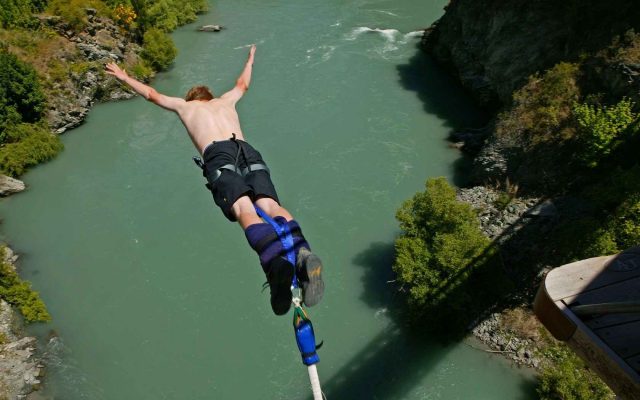Very recently, a lot of reports about accidents in the adventure sport of bungee jumping have startled the media. The latest one was when Bollywood actress and former Femina Miss India Natasha Suri had an unfortunate accident while doing a bungee jump in Indonesia.
The rope had snapped in the middle and she fell straight into the water. She was then rushed to the nearest hospital and is currently under supervision.
So, before you decide to have this moment of thrill and adrenaline rush, speculate again.
Make sure you have read well about the sport and the warning signs it comes with.
Read on to learn about some of the most important details regarding bungee jumping:
The speed and the pressure
One of the threats posed by bungee jumping to women is of uterine prolapse. Due to the enormous speed and pressure of the free fall, the uterus might not only tip but in severe cases can slip out of its position.
This can be fatal.
Pregnant women are therefore always ill-advised for bungee jumping.
Length of the rope
At times due to errors in calculations, the rope might be too long and you might be submerged partly in water instead of just brushing its surface.
If you fall on water from such great height and speed, water would feel like a cemented ground on which you hit hard. You will also be submerged upside down. Now, that is something scary!
Related: Who Are The Formula 1 Grid Girls And Is It Really Necessary To Ban Them?
The backward pull of the rope
After the free fall, the chord will tug you back upwards with a large amount of force. This combines extreme force and the pull of the chord which can cause varying degrees of injuries to your eyes, spine, and neck that can be very severe.
When the elastic chord suddenly pulls you back upward, it results in the flow of fluid to your head and leads to very high blood pressure inside the blood vessels of your eyes. The retina, which is the thin layer of cells at the back of the eye that directly connects to the brain, can be affected by this high pressure.
Injuries to these areas of your eyes can also cause impairment of vision, temporary or permanent.
Rope burns
Rope burn is a common injury from bungee jumping. The rope being quite thick can cause painful blisters due to its friction.
The force of the chord in bungee jumping can further harm the vertebrae of your spine. Compression fractures like broken bones in the spine and herniated discs and spaces between the vertebrae are some of the most common injuries.
However, this is only a situation of a worst-case scenario, yet worth having knowledge about.
Besides, you yourself must take the basic safety measures advisable for bungee jumping.
Are you then willing to take the risk?
Image Credits: Google Images
Sources: The Telegraph, Livestrong, Healthfully + more
Also Read:
Here’s All About Curling – The Unique Sport Played At The Winter Olympics








































